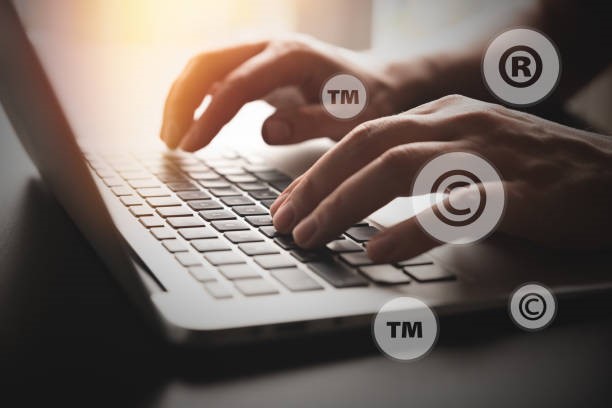
The Impact of Patent Drafting on Patent Prosecution
Introduction
Patent prosecution is the process of obtaining a patent by interacting with the patent office, which includes preparing, filing, and negotiating patent applications. Effective patent drafting is crucial in this process as it influences the success of the patent application and its ability to withstand scrutiny during prosecution. This article explores how patent drafting impacts patent prosecution, examining the key elements of drafting that affect prosecution outcomes, common challenges, and strategies for optimizing patent applications to navigate the prosecution process successfully.
The Patent Prosecution Process
Overview of Patent Prosecution
Patent prosecution involves several stages, from the initial filing of a patent application to the eventual grant or rejection of the patent. Key stages include:
- Preparation and Filing: Drafting and submitting the patent application to the relevant patent office.
- Examination: The patent examiner reviews the application to assess its compliance with patent laws and standards.
- Office Actions: Communications from the patent office requesting clarifications, amendments, or rejections.
- Responses: Addressing office actions through amendments, arguments, or additional evidence.
- Allowance and Grant: Finalizing the application and obtaining the patent grant.
Key Components of a Patent Application
- Title: Descriptive title of the invention.
- Abstract: Brief summary of the invention’s technical features.
- Background: Contextual information about existing technologies and the problem addressed.
- Summary of the Invention: Overview of the invention’s novel aspects.
- Detailed Description: Comprehensive description of the invention, including embodiments and drawings.
- Claims: Legal definitions outlining the scope of protection sought.
The Role of Patent Drafting in Prosecution
1. Crafting Effective Claims
Scope of Claims: Claims define the boundaries of patent protection. Effective drafting of claims is crucial for:
- Defining Invention: Accurately defining the invention’s scope to prevent it from being overly broad or narrow.
- Avoiding Rejections: Clearly distinguishing the invention from prior art to minimize rejections based on lack of novelty or non-obviousness.
Independent vs. Dependent Claims: Balancing independent and dependent claims to cover various embodiments and specific features:
- Independent Claims: Broad claims that cover the invention’s essential aspects.
- Dependent Claims: Narrower claims that add specific details or limitations.
Best Practices:
- Precision: Use clear and precise language to define the invention’s scope.
- Strategic Drafting: Develop a range of claims to cover different aspects and variations of the invention.
2. Detailed Description and Support
Comprehensive Description: A detailed description provides the foundation for understanding and evaluating the claims. It impacts prosecution by:
- Supporting Claims: Ensuring that the claims are fully supported by the detailed description to meet the enablement and written description requirements.
- Facilitating Examination: Providing clear and thorough explanations that assist the examiner in understanding the invention.
Embodiments and Examples: Including various embodiments and examples helps to:
- Illustrate Invention: Demonstrate different ways the invention can be implemented.
- Enhance Clarity: Clarify how the invention works and its potential applications.
Best Practices:
- Detail and Clarity: Provide a comprehensive description with ample examples and drawings.
- Consistency: Ensure that the description and claims are consistent and aligned.
3. Addressing Prior Art
Prior Art Search: Conducting a thorough prior art search before drafting helps to:
- Identify Relevant Art: Understand existing technologies and potential obstacles.
- Refine Claims: Draft claims that distinguish the invention from prior art.
Patentability Assessment: Evaluating the invention’s novelty and non-obviousness based on prior art:
- Novelty: Ensure that the invention is new compared to existing technologies.
- Non-Obviousness: Assess whether the invention would be obvious to someone skilled in the field.
Best Practices:
- Thorough Research: Perform comprehensive prior art searches and analysis.
- Strategic Claim Drafting: Tailor claims to address prior art and highlight the invention’s uniqueness.
4. Addressing Office Actions
Types of Office Actions: Office actions may include rejections, objections, or requests for clarification. Common types include:
- Rejection for Lack of Novelty: Claims are rejected based on prior art.
- Rejection for Non-Obviousness: Claims are deemed obvious in light of existing technologies.
- Formal Rejections: Issues with the application’s format or content.
Response Strategies: Effectively addressing office actions involves:
- Amendments: Revising claims or descriptions to overcome objections.
- Arguments: Providing legal and technical arguments to counter rejections.
- Additional Evidence: Submitting evidence to support the claims or address examiner concerns.
Best Practices:
- Detailed Responses: Prepare thorough and well-supported responses to office actions.
- Strategic Amendments: Make strategic changes to claims and descriptions to address issues.
5. Enhancing Patent Quality
Quality Control: Ensuring that the patent application is of high quality impacts prosecution by:
- Reducing Errors: Minimizing mistakes and ambiguities in the application.
- Improving Examination: Facilitating a smoother examination process and reducing the likelihood of objections.
Review and Revision: Regularly reviewing and revising the application to ensure accuracy and completeness:
- Internal Review: Conducting internal reviews to identify and address potential issues.
- Expert Consultation: Seeking input from technical and legal experts to enhance the application.
Best Practices:
- Rigorous Review: Implement a thorough review process to ensure application quality.
- Expert Collaboration: Work with technical and legal experts to refine the application.
Common Challenges in Patent Drafting and Prosecution
1. Ambiguity in Claims
Impact: Ambiguous or unclear claims can lead to rejections and disputes during prosecution. Challenges include:
- Scope Issues: Difficulty in determining the exact scope of protection.
- Infringement Risks: Increased risk of potential infringement disputes.
Solutions:
- Clear Language: Use precise and unambiguous language in claims.
- Thorough Review: Review claims to ensure clarity and consistency.
2. Handling Complex Technologies
Impact: Drafting and prosecuting patents for complex technologies can be challenging due to:
- Technical Complexity: Difficulty in accurately representing intricate technologies.
- Examination Challenges: Increased scrutiny from patent examiners.
Solutions:
- Expert Collaboration: Work with technical experts to ensure accurate representation.
- Detailed Descriptions: Provide comprehensive descriptions and examples.
3. International Prosecution
Impact: Navigating international patent prosecution involves additional complexities:
- Jurisdictional Differences: Variations in patent laws and procedures across different jurisdictions.
- Coordination Challenges: Managing filings and responses in multiple countries.
Solutions:
- Global Strategy: Develop a coordinated global IP strategy and work with local counsel.
- Consistent Filing: Ensure consistency in filings and responses across jurisdictions.
4. Prior Art and Novelty Issues
Impact: Addressing prior art and ensuring novelty can be challenging due to:
- Prior Art Overlaps: Difficulty in distinguishing the invention from existing technologies.
- Novelty Requirements: Ensuring that the invention meets novelty requirements.
Solutions:
- Comprehensive Searches: Conduct thorough prior art searches and analysis.
- Strategic Drafting: Tailor claims to highlight the invention’s novelty and non-obviousness.
Case Studies and Examples
Case Study 1: Pharmaceutical Patent Prosecution
Situation: A pharmaceutical company seeks a patent for a new drug with novel therapeutic properties.
Impact of Drafting:
- Claims: Effective drafting of claims to cover the drug’s active ingredients and therapeutic applications.
- Description: Comprehensive description of the drug’s formulation and benefits.
Outcome: Successful patent grant with robust protection for the drug’s unique properties.
Case Study 2: Software Patent Prosecution
Situation: A tech company develops a new software algorithm for data processing.
Impact of Drafting:
- Claims: Clear and precise claims covering the algorithm’s steps and functionality.
- Description: Detailed description of the algorithm’s implementation and applications.
Outcome: Obtained patent protection with a well-defined scope for the software algorithm.
Best Practices for Patent Drafting and Prosecution
1. Comprehensive Preparation
Prior Art Analysis: Conduct thorough prior art searches and analysis to inform claim drafting and avoid overlaps.
Detailed Drafting: Provide a detailed and clear description of the invention, including multiple embodiments and examples.
2. Strategic Claim Writing
Balance Broad and Narrow Claims: Develop a range of claims to cover different aspects of the invention, balancing broad protection with specific details.
Avoid Ambiguities: Use precise language and avoid ambiguous terms in claims and descriptions.
3. Effective Response to Office Actions
Prepare Detailed Responses: Address office actions with thorough and well-supported responses, including amendments and arguments.
Consult Experts: Seek input from technical and legal experts to enhance responses and address examiner concerns.
4. Quality Control and Review
Implement Rigorous Review: Conduct internal reviews and collaborate with experts to ensure the quality and accuracy of the application.
Continuous Improvement: Regularly review and update the application to address any issues and enhance its chances of successful prosecution.
Conclusion
The impact of patent drafting on patent prosecution is profound, influencing every stage of the patenting process. Effective patent drafting ensures that the application meets legal requirements, addresses prior art, and facilitates a smooth prosecution process. By focusing on clear and precise claims, comprehensive descriptions, and strategic responses to office actions, patent attorneys can significantly enhance the likelihood of obtaining a patent and protecting their clients’ inventions. Through meticulous drafting and proactive management, patent attorneys play a crucial role in navigating the complexities of patent prosecution and contributing to successful IP outcomes.

